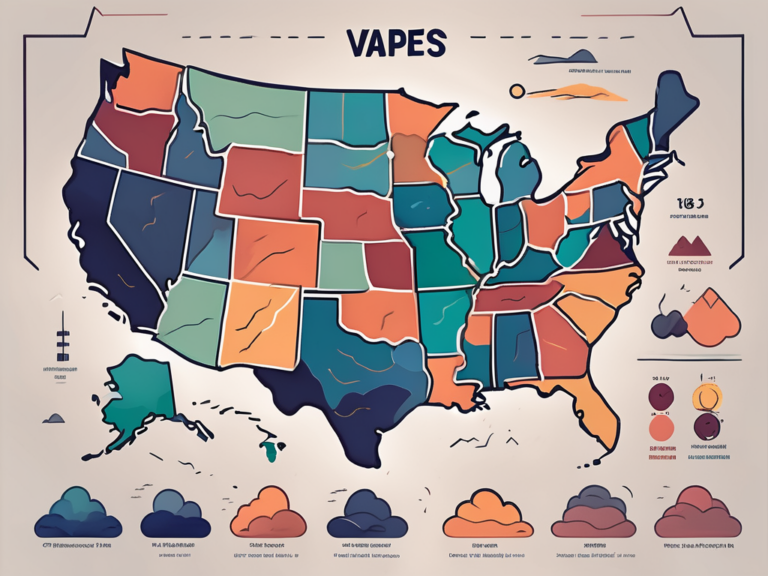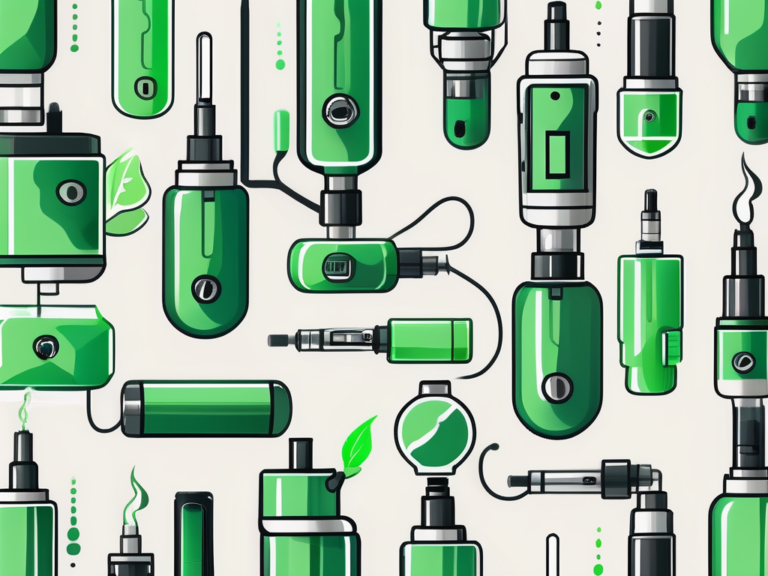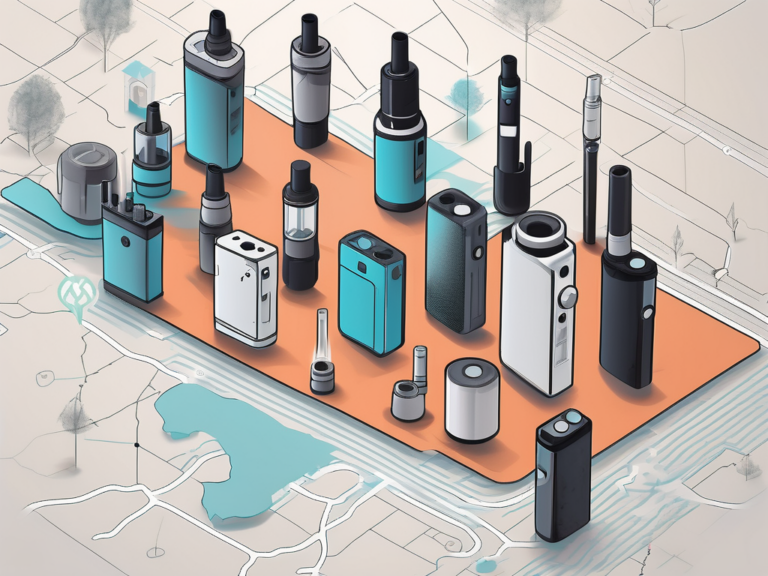what year did vapes come out
Vaping, a term used to describe the act of inhaling and exhaling vapor produced by an electronic device, has become immensely popular in recent years. But do you ever wonder when this innovative practice emerged? In this article, we will explore the fascinating journey of vapes, from their inception to their impact on society, and their potential for the future.
Understanding the Concept of Vaping
Vaping has revolutionized the way people enjoy nicotine and other substances. To fully understand this phenomenon, it is essential to delve into the science behind vaping. By heating a liquid, commonly referred to as e-juice or vape juice, a vapor is produced, allowing users to inhale it through a device called a vape pen or e-cigarette. Unlike traditional cigarettes, vaping does not involve burning tobacco, which means fewer harmful chemicals are released into the air.
One fascinating aspect of vaping is the wide array of flavors available in e-juices. From fruity concoctions like strawberry lemonade to rich dessert flavors like vanilla custard, vapers have a plethora of options to choose from. These flavors not only enhance the vaping experience but also cater to individual preferences, making it a more personalized activity.
The Science Behind Vaping
At the core of vaping lies the principle of vaporization. When the e-juice is heated, it undergoes a phase change, turning into vapor rather than smoke. This process allows users to have a similar experience to smoking without the detrimental effects associated with combustion. The e-juice typically contains a combination of propylene glycol, vegetable glycerin, flavorings, and nicotine, although nicotine-free options are also widely available.
Furthermore, the act of vaping has evolved over the years, leading to advancements in technology and safety features. Modern vape devices are equipped with temperature control settings, adjustable airflow systems, and even Bluetooth connectivity for a more customized experience. These innovations not only improve the overall vaping experience but also prioritize user safety and convenience.
Different Types of Vapes
Vapes come in various shapes and sizes, catering to the preferences and needs of different individuals. Some of the most common types include vape pens, pod mods, box mods, and mechanical mods. Each device offers a unique vaping experience, whether it’s portability, customization, or enhanced performance. With an extensive range of options available, there is a vape suitable for everyone.
Moreover, the vaping community has grown into a vibrant subculture with enthusiasts participating in cloud-chasing competitions, where the goal is to produce the thickest and most impressive vapor clouds. These events showcase the creativity and skill of vapers, who experiment with different techniques and equipment to achieve mesmerizing visual effects. The camaraderie and passion within the vaping community highlight the social aspect of this activity, bringing like-minded individuals together to share their love for vaping.
The Inception of Vapes
The journey of vaping began several decades ago, and it is interesting to explore how it evolved into the phenomenon it is today. Let’s take a closer look at the early years of vapes and the advancements that paved the way for their growing popularity.
The First Generation of Vapes
In the early 2000s, the concept of vaping emerged with the invention of the first e-cigarette. Hon Lik, a Chinese pharmacist, developed this groundbreaking device as a way to help smokers break free from their addiction to traditional cigarettes. The first e-cigarettes closely resembled conventional cigarettes in shape and size and were often disposable.
Despite initial skepticism and regulatory challenges, these devices gained traction among smokers seeking an alternative to traditional cigarettes. The first-generation vapes quickly gained popularity in Europe and Asia, sparking curiosity and interest in other parts of the world.
As the popularity of first-generation vapes grew, so did the demand for technological advancements. Vaping enthusiasts were eager to explore new possibilities and enhance their vaping experience. This demand led to a wave of innovation and improvements in battery life, vapor production, and overall user experience.
Technological Advancements in Vapes
The introduction of second-generation devices, such as vape pens and refillable e-cigarettes, marked a turning point in the vaping industry. These devices offered users more control and flexibility, allowing them to experiment with different flavors and nicotine strengths. Vapers could now enjoy a wider range of options and customize their vaping experience to suit their preferences.
Furthermore, the emergence of third-generation devices, known as mods, brought about a new wave of customization and personalization. These devices offered users the ability to adjust their vaping experience by altering factors such as power output, airflow, and temperature control. Vapers could now fine-tune their devices to create the perfect balance of flavor, vapor production, and throat hit.
With each technological advancement, the vaping industry continued to evolve and expand. Vaping became more than just an alternative to smoking; it became a lifestyle choice for many. Vape enthusiasts formed communities, sharing their experiences, tips, and tricks. Online forums and social media platforms became hubs of knowledge and creativity, where vapers could connect and learn from one another.
Today, the vaping industry continues to push boundaries, with new advancements and innovations constantly being introduced. From sleek and compact pod systems to high-powered box mods, there is a vaping device to suit every preference and style. As the journey of vapes continues, it is exciting to imagine what the future holds for this ever-evolving industry.
The Evolution of Vaping Over the Years
Vaping has come a long way since its early days. Let’s explore how it has evolved to meet the demands of the 21st century, providing users with unprecedented convenience and satisfaction.
One of the key factors driving the evolution of vaping has been the continuous innovation in battery technology. Early vaping devices were often bulky and had limited battery life, requiring frequent recharging. However, with advancements in battery technology, modern vaping devices now offer longer battery life, allowing users to enjoy uninterrupted vaping sessions without constantly worrying about running out of power.
Vaping in the 21st Century
The 21st century witnessed rapid advancements in vaping technology, along with an exponential increase in its popularity. Vaping devices became more compact, sleeker, and aesthetically appealing, making them more accessible and appealing to a wider population.
Furthermore, the rise of social media and online vaping communities has played a significant role in shaping the vaping culture of the 21st century. Vapers now have platforms to share their experiences, discuss new products, and connect with like-minded individuals from around the world, fostering a sense of community and camaraderie among vaping enthusiasts.
Moreover, the introduction of different e-juice flavors played a crucial role in attracting new users to the world of vaping. From fruity and dessert-inspired flavors to classic tobacco and menthol, the range of choices available allowed vapers to personalize their experience like never before.
Modern Day Vaping Devices
Modern vaping devices, often referred to as pod systems, have further revolutionized the vaping experience. These devices are compact, easy to use, and offer a hassle-free vaping experience. With their sleek designs and simplicity, they have become particularly popular among beginners and those who value convenience.
Additionally, the integration of temperature control features in modern vaping devices has provided users with more control over their vaping experience. By allowing users to adjust the temperature of their device, vapers can customize their vaping sessions to suit their preferences, whether they prefer cooler vapor for a smoother inhale or warmer vapor for richer flavor profiles.
The Impact of Vaping on Society
Vaping has stirred conversations and debates, especially concerning its impact on public health and cultural trends. It is essential to examine both the positive and negative aspects associated with vaping to have a comprehensive understanding of its influence.
Vaping and Public Health
While vaping has been considered a potentially effective smoking cessation tool, concerns have been raised regarding its impact on public health, particularly among young people. The rise in popularity of flavored e-juices has raised worries about appealing to underage users. However, it is crucial to note that research on the long-term effects of vaping is still ongoing, and definitive conclusions regarding its health implications are yet to be reached.
Vaping Culture and Trends
Vaping has not only become a means of nicotine delivery but has also evolved into a cultural phenomenon. Vape enthusiasts gather at vape shops, participate in cloud chasing competitions, and share their experiences and knowledge on online forums. With this thriving subculture, vaping has become more than just a habit; it has become a lifestyle.
The Future of Vaping
The trajectory of vaping shows no signs of slowing down, as innovative advancements continue to shape its future. Let’s explore the potential ways vaping technology may evolve in the years to come.
Innovations in Vaping Technology
Vaping technology is continuously evolving, and we can expect to see further innovations that enhance the overall vaping experience. From advancements in battery longevity to the introduction of new heating elements, these innovations aim to provide users with even more satisfaction and customization options.
The Potential Impact of Regulations on Vaping
As the popularity of vaping continues to grow, regulatory bodies around the world are imposing restrictions and guidelines to ensure the safety of users and minimize potential harm. The impact of these regulations on the industry remains to be seen, but it is crucial to strike a balance between regulation and accessibility to maximize the potential benefits of vaping.
In conclusion, vapes made their debut in the early 2000s and have since evolved into a widespread phenomenon. With their ability to provide an alternative to traditional cigarettes, vaping has gained popularity among individuals seeking a potentially less harmful way to enjoy nicotine. However, it is essential to continue research and monitor the impact of vaping to ensure its safety and address any potential concerns. The future of vaping holds promises of further innovation and regulation, shaping a landscape that caters to the preferences and needs of millions of users worldwide.






